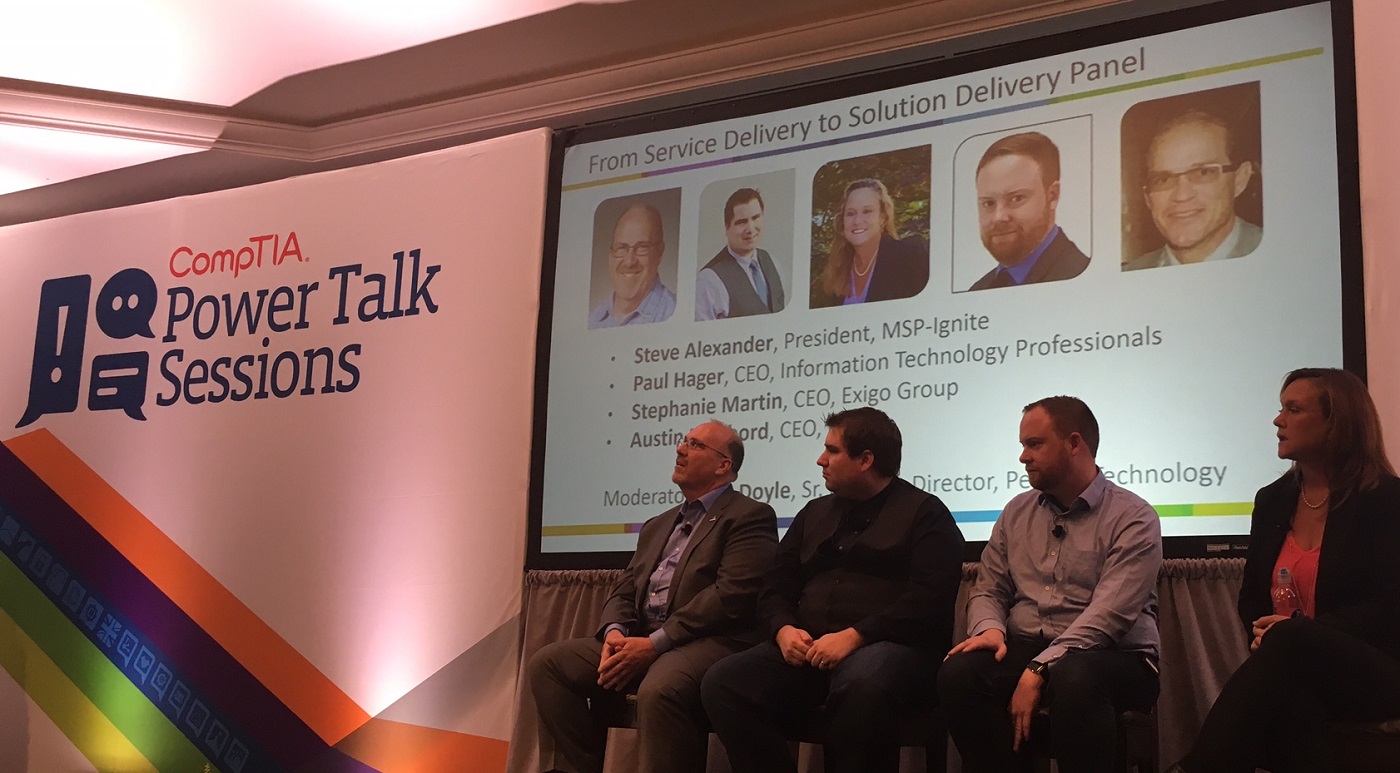Transactions have been replaced by recurring revenue. Reselling product is no longer an option, with solution selling taking its place. And, in the spirit of true business transformation, a focus on clients has been pushed aside to address the specific needs of end users. Those changes are more than semantics. They represent a fundamental shift in the way channel companies do business today.
They’re also a sign of things to come. Cloud and managed services have reached industry-wide acceptance today, and social media management, the Internet of Things and big data are waiting in the wings. The digital age is truly here for those who are ready, willing and able to offer it. But additional “adjustments” may be required to make successful transformations.
What does that involve? Depending on the breadth and depth of the business transformation, it can take quite a bit of your time, resources, skills and a great plan to move into a solution mindset. That was the heart of the discussion among several successful channel “change agents” at this year’s CompTIA Annual Member Meeting.
The Service Delivery to Solution Delivery panel, moderated by T.C. Doyle, senior content director with the Penton Technology Group, featured four managed services experts who shared a host of insightful observations and recommendations. The group included:
-
Steve Alexander, president, MSP-Ignite
-
Paul Hager, CEO, Information Technology Professionals
-
Stephanie Martin, CEO, Exigo Group
-
Austin McChord, CEO, Datto

Doyle pointed out that the “burning platform under all the solutions is like the Tesla model. Customers today expect a remarkable experience and, if we can embrace that as an industry, we will go far.” In effect, the channel is no longer about the technology, it’s about empowering those who use it as a foundation for work, play and life.
McCord (who acknowledged owning a Tesla) suggested the car company gets away with a lot simply because of experience. The updates can be scary at times when you’re driving down the street, but drivers will forgive those nuances if they enjoy the other aspects of ownership. “When you have a solution that keeps getting better, you get away with some knowing things will improve. There is hope over the horizon that you don’t get with a standard car that is essentially hard-wired.”
That leeway can benefit those selling solutions, as long as they’re offering a solid platform and are making those “Tesla-like” improvements. While vendor offerings are still critical components, the equation has changed for providers, as Martin suggested. “There was a day when you were leading with a service that used a brand name, but we don’t do that anymore. In our current company, we present up-and-coming innovation as part of our solution. Based on the way we position it today, we can be very experimental, but to do that we have to be nimble and grow with the addition of new solutions, including the cloud, which makes our clients more competitive.”
Alexander expanded on that point, noting “the primary delivery method for business solutions today is the internet. It’s all about controlling and leveraging the information. Remember, many small businesses have no IT guy or a CIO. Show them problems they didn’t know they have and earn their business.”
MSPs have to be more focused than ever as well. They need to better understand their clients’ needs, including their cloud options, but they must also improve their own business operations and increase financial opportunities. “Redundant solutions need to be reduced. One BDR [backup and data recovery] solution, maybe another for backup. On the financial side, MSPs need to turn more of their long-term relationships into long-term contracts, building recurring revenue that will allow them to expand and improve.”
The future focus was central throughout the panel discussion. Hager pointed out one area that’s ripe for MSPs looking to become innovators. “Big data is just the buzzword. But be sure business intelligence is in your vocabulary ... look for opportunities with existing customers to implement these types of solutions. Start hiring smart people who understand the aspects of business. Use LinkedIn and other recruitment tools to find those with strong skills to sell and help develop those types of applications.”
That’s just a sampling of the great advice shared by the expert panelists. They captured how crucial it is to keep transforming channel businesses today. You have to change to keep up with competitors, innovation and, most of all, your clients’ shifting business priorities. The end-user experience is a major part of that transformation, and Martin offered one last recommendation on that subject that all channel professionals should take to heart. “The more we take the technology speak out of the equation, the more success we’ll have.”

